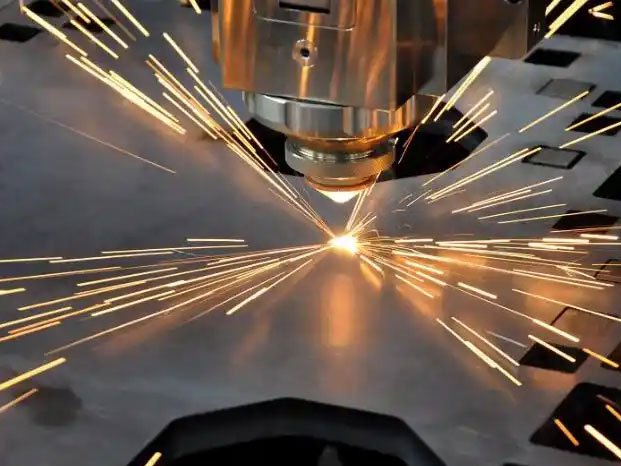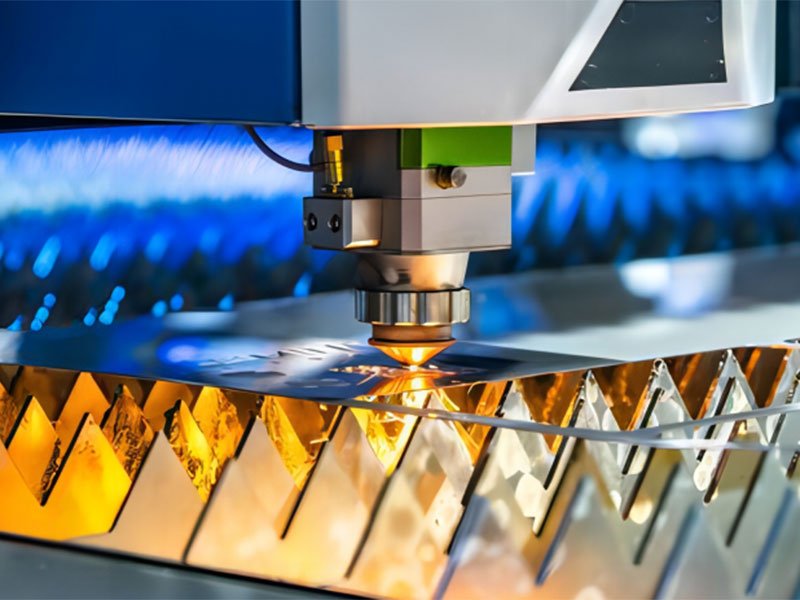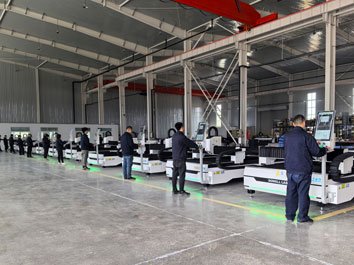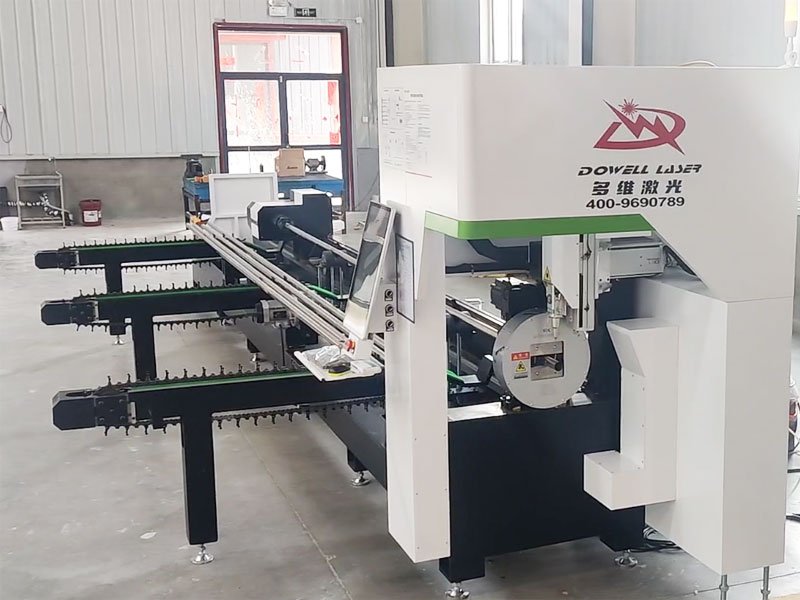Fiber lasers have revolutionized the field of material cutting with their high efficiency, precision, and versatility. Unlike traditional CO₂ lasers, fiber lasers utilize optical fibers doped with rare-earth elements to generate a high-powered laser beam. This technology enables fiber lasers to cut a wide variety of materials with exceptional accuracy and speed.
Now let DOWELL fiber laser cutting machine manufacturers understand what materials can a fiber laser cut in the industrial market.

What is Fiber Laser Technology
Fiber lasers have revolutionized the field of material cutting with their high efficiency, precision, and versatility. Unlike traditional CO₂ lasers, fiber lasers utilize optical fibers doped with rare-earth elements to generate a high-powered laser beam. This technology enables fiber lasers to cut a wide variety of materials with exceptional accuracy and speed.
What Materials Can a Fiber Laser Cut
Fiber lasers are capable of cutting a diverse range of materials, making them a preferred choice in industries such as automotive, aerospace, electronics, and manufacturing.
Metals
Stainless Steel
Stainless steel is one of the most commonly cut materials using fiber lasers. The precision of fiber lasers ensures clean edges and minimal thermal distortion, making it ideal for applications in medical devices, kitchen appliances, and construction.
Carbon steel plate
After more than 20mm, the carbon steel plate is cut by the oxygen-assisted melting cutting method, and the slit can be controlled within a satisfactory width, and the slit for the thin steel plate can be as narrow as about 0.1 mm.
Laser cutting is an effective processing method for stainless steel plates. It can control the heat-affected zone within a small range, so as to maintain its corrosion resistance. Most alloy structural steels and alloy tool steels can be used to obtain good trimming quality by laser cutting.
Copper
Copper’s high thermal conductivity makes it a challenging material to cut. Fiber lasers can efficiently cut copper by adjusting power settings and pulse rates, ensuring clean cuts for electrical components and decorative items.
Aluminum and aluminum alloys
Aluminum and aluminum alloys cannot be melted and cut with oxygen. The melting and cutting mechanism must be used. Aluminum laser cutting requires a high power density to overcome its high reflectivity to the 10.6um wavelength laser.
The YAG laser beam with a wavelength of 1.06 um can greatly improve the cutting quality and speed of aluminum laser cutting due to its high absorptivity.

Titanium and titanium alloys
Titanium and titanium alloys commonly used in the aircraft manufacturing industry use oxygen as an auxiliary gas. The chemical reaction is fierce and the cutting speed is faster, but it is easy to form an oxide layer on the cutting edge and even cause overburn. It is safer to use inert gas as auxiliary gas, which can ensure the cutting quality.
Most nickel-based alloys can also be cut with oxygen-assisted melting. The reflectivity of copper and copper alloys is too high, basically cannot be cut with a 10.6um carbon dioxide laser.
Non-Metals
Plastics
Fiber lasers can cut various plastics, including acrylic, polycarbonate, and PVC. They offer precise cuts without causing melting or deformation, making them suitable for signage, packaging, and automotive interiors.
Composites
Composite materials, often used in aerospace and automotive sectors, can be precisely cut with fiber lasers. The technology ensures clean separation of layers without compromising the structural integrity of the composite.
Special Materials
Glass
While fiber lasers are not typically used for cutting glass, they can be employed for marking and engraving purposes. Specialized fiber lasers can etch intricate designs onto glass surfaces without causing fractures.
Wood
Fiber lasers can be used for engraving and marking wood, providing detailed designs for furniture, signage, and decorative items. However, cutting wood is generally better suited for CO₂ lasers due to fiber lasers’ absorption characteristics.

Benefits of Using Fiber Lasers for Material Cutting
- High Precision: Fiber lasers offer unparalleled accuracy, making them ideal for intricate designs and tight tolerances.
- Efficiency: They have a higher electrical efficiency compared to other laser types, resulting in lower operational costs.
- Low Maintenance: Fiber lasers have fewer moving parts and longer lifespans, reducing downtime and maintenance requirements.
- Versatility: Capable of cutting a wide range of materials, fiber lasers are adaptable to various industries and applications.
- Clean Cuts: Minimal thermal distortion and high-quality edges reduce the need for additional finishing processes.
How Choose Materials for Fiber Laser Cutting
- Material Thickness: Fiber lasers are best suited for thin to medium-thickness materials. Extremely thick materials may require higher-powered lasers or alternative cutting methods.
- Reflectivity: Highly reflective materials like copper and aluminum may require specific adjustments in laser settings to achieve optimal cutting performance.
- Material Composition: Composite materials and those with mixed elements may present unique challenges, necessitating precise control over laser parameters.
- Edge Quality Requirements: Depending on the application, the required precision and finish quality may influence the choice of laser settings and cutting strategies.

Conclusion
Ready to leverage the precision and efficiency of fiber laser cutting for your projects? Contact us today to discuss your material cutting needs and discover how our advanced fiber laser technology can bring your ideas to life.
FAQs
What types of metals can fiber lasers cut?
Fiber lasers can cut a variety of metals, including stainless steel, aluminum, titanium, and copper, offering precise and clean edges suitable for various industrial applications.
Are fiber lasers suitable for cutting plastics?
Yes, fiber lasers can effectively cut many types of plastics such as acrylic, polycarbonate, and PVC, providing precise cuts without causing melting or deformation.
Can fiber lasers cut composite materials?
Absolutely. Fiber lasers are capable of cutting composite materials used in aerospace and automotive industries, ensuring clean separation of layers without compromising structural integrity.
What are the maintenance requirements for fiber lasers?
Fiber lasers generally require minimal maintenance due to their solid-state design and fewer moving parts. Regular cleaning and periodic inspections ensure optimal performance and longevity.
How do fiber lasers compare to CO₂ lasers for material cutting?
Fiber lasers offer higher electrical efficiency, lower maintenance, and better precision compared to CO₂ lasers. However, CO₂ lasers may be more suitable for cutting non-metal materials like wood and glass.



